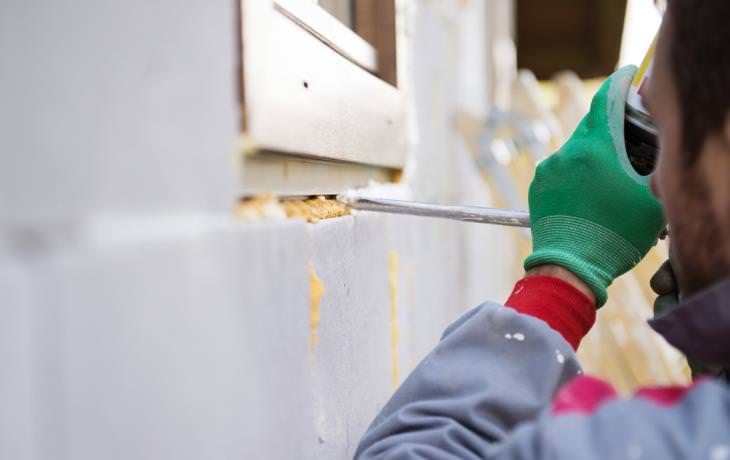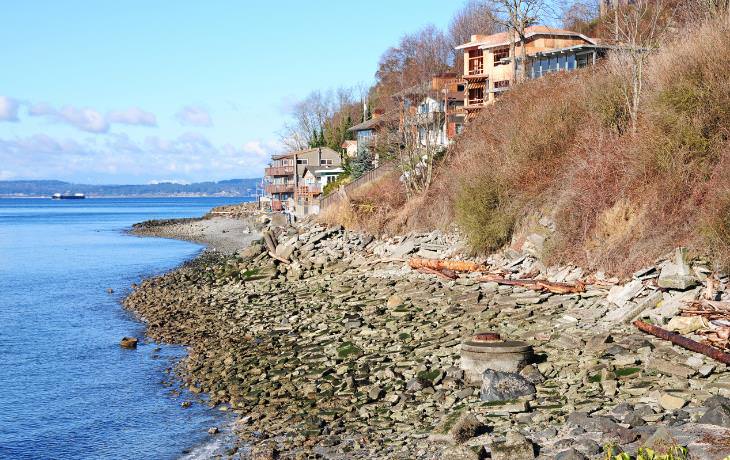If you live in a house by the sea, a lake, or a hill, you must be aware of soil erosion. Houses situated near steep slopes or embankments are in danger of developing cracks and accelerated erosion due to the soil eroding and washing away and thus not supporting your home's foundation.
But even if you don't live near a slope or embankment, your home's foundation can move over time. These movements are what causes cracks in your house's exterior and interior walls. Read on to see how you can prevent them. As for the treatment of the problem, it is strictly confined to professionals, so better protect your home and have no need for costly repairs.
What causes cracks and soil erosion
Soil erosion is a natural process during which soil and rocks are worn down or carried away by the elements - be it harsh winds, streams, waves, or even geological shifts. Lack of vegetation can also leave your home vulnerable to soil erosion and cracking.
Moisture in the soil around your house has a big effect on your home's foundation too. If the soil dries up and cracks, it will shrink, thus loosening the support on the foundation. The simple solution is summertime sprinklers. If, on the other hand, the soil is flooded, it can expand and put pressure on the walls and the foundation. This can be solved by installing an adequate drainage system.
If parts of your home foundation are exposed, consider filling the bare areas of your lawn with soil. Adding new topsoil can be done any time of year. More often than not, the cracks and leaks in your home are the results of movement in the home's foundation. Below are some subtle signs of movement in your foundation that should alert you to take any of the measures covered in this article. They will appear before any major cracks happen on your walls.
- Jammed doors and windows or doors that won't remain shut.
- Cracks in the patio, the driveway, or any other exterior area.
- A leaky ceiling.
Rendering
Rendering is another word for sealing and covering the exterior walls of your house with a layer of cement. This has many benefits other than preventing cracks. The cement will seal your house to moisture and mold and strengthen the house's foundation. This should be done every few years. It is usually done on brick walls rather than timber, but it can be done on timber too, even though it's a more complicated multi-step process. For timber, acrylic render is better. one way or another, this process is best left for experts - do not try to DIY it.
Vegetation and riprap
If you plan to live in your current home for many years, you can plant shrubs and other vegetation to protect your home from erosion. Bushes and grasses take roots that have a tight grip on the soil, keeping it securely in place. They can grow even on steep slopes where the soil is in constant danger of being carried away by heavy rains.
Shrubs will even help diffuse heavy rains that fall on your land. Plant them as the first line of vegetation closest to your home, and make sure you're choosing low-spreading varieties that don't take roots as thick as trees. Trees could lift or move your home's foundation.
If the situation is dire and there's no time for plants to take root, annual grasses can be your immediate lifesaver. These also prepare the soil for perennial strains and slower-growing vegetation. Another immediate but temporary solution is granite riprap strategically placed to contain the free flow of water and soil.
Protective products
A more heavy-duty solution involves professionally installing retaining wall barriers or creating stepped terraces. But if your property doesn't require heavy servicing, there are some products you can use and install on your own, such as geogrids (shown in the picture above). These are synthetic protective barriers that keep soil in place as long as they're covered in it completely and hidden away from the sun. You can cover them with soil and mulch, or add a layer of mesh fabric for maximum efficiency.
Another solution is an erosion control blanket made of fiber or compost. They minimize the effects of water erosion on the soil and degrade slowly, allowing plants and grasses to gradually take over.




